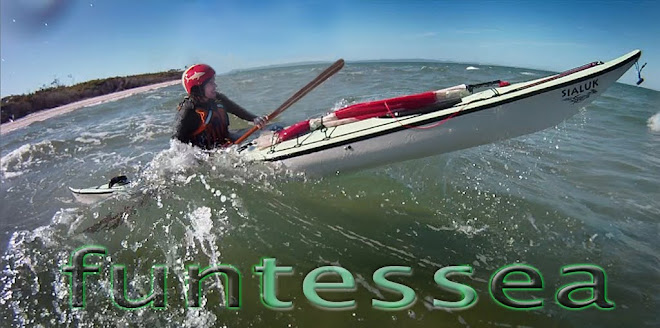
Media reports of the EPA (Environment Protection Agency) towing 3 humpback whale carcasses to Mud Island, close to Brisbane to decompose, has generated keen discussion in the local community.
With limited information and experience in the disposal of dead whales, sea kayakers and boaties alike have been pondering the cause of death and the wisdom of the EPA's Moreton Bay choice of final resting place for these mammals.

What happens to whales as they decompose?
Would the placement of the humpbacks on Mud Island encourage large sharks to the area?
Are there benefits to the environment?
Without a degree in marine science I can only join in the speculation.
Could the humpback whales demise simply be the normal course of nature, which we all now witness 'as it happens', as part of our overpopulated, media saturated world?
Could it be more sinister, as some suggest, and be related to the poor water quality of Australia's east coast, perhaps even linked to the Moreton Island oil spill? 
Kate, a well known local sea kayaker, hazarded a solo visit to Mud Island to see what the fuss is about. As you can see from the images (taken on mobile phone cam), there are no white pointer fins breaking the whale fat slick floating on the water.
Kate saw only one whale as the foul stench of decomposing matter was so strong that it quickly drove her from the island. She didnt bother with a circumnavigation to search for the other whales and paddling away, Kate noticed her paddle blades and kayak were now coated with a pungent fatty residue.
Back on land transporting her now greasy Nadgee by trolley, Kate wondered if she would encounter the local dingo, drawn by the smells permeating her kayak as she walked home through the streets.
An experienced solo sea kayaker who has extensively kayaked the eastern coast of Australia, Kate had never encountered a problem like this.
Consideration was given to the merits of using kitchen degreasers, metholated spirits and kerosense to remove the grease and smell of decomposing whale fat.
The decision to try metholated spirits first proved to be sufficient, although Kate is sure there is a lingering 'odour' to her kayak.
Within days of Kates visit, the whale carcasses were no longer to be found at Mud Island. What happened to them remains as much a mystery to this kayaker as why they were taken there in the first place.
All images by Kate Yeomans_used with permission
Update - 26th September 2010
12 months on, Vanilla, Gnarlydog and I revisted Mud Island. Full post and images here - Mud Island Humpback Whales revisited

No comments:
Post a Comment